How to make chair seats from old neck ties
Reupholstering with neckties
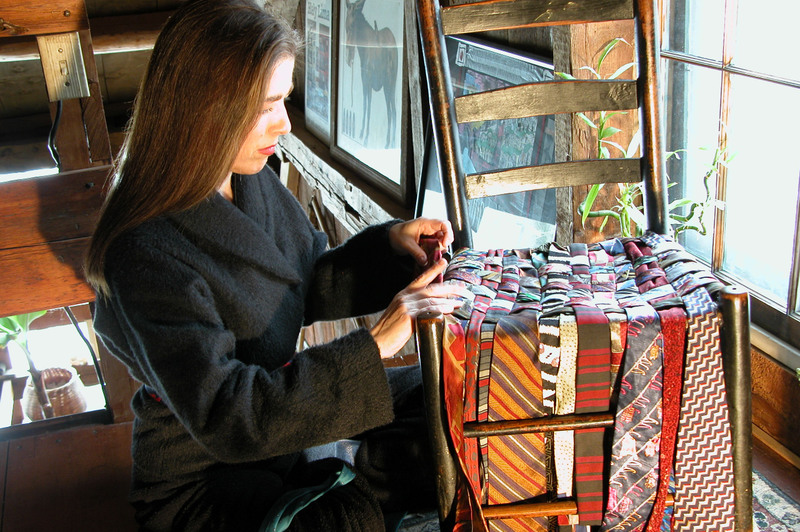
Once our Christmas house guests finally left (after I asked them to rip up the laundry room floor and find the radon leak) I drove to Boston, where I’m now tormenting relatives with the fine art of being a house guest. So far I’ve overslept, overeaten and over expressed myself as often as possible.
Are they enjoying my company? So much so that they gave me some stuff to do, like finding the freon leak in the freezer. And then they all went out. It’s a pacing thing. They can’t have too much fun all at once.
And speaking of fun, ever wondered what to do with all of those old neckties that your male relatives never wear anymore? My sister had an idea. She turned them into sittable art. Weaving ties into chair seats is way easier than, say, finding the freon leak in a freezer, plus there are no painful accidents with your tongue.
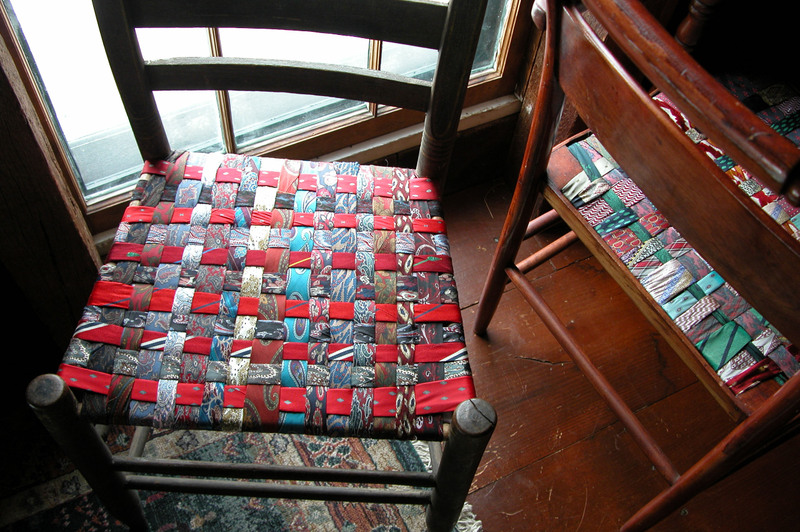
Knot Especially
All you need to start are some old chairs (Gillian bought hers at an auction – 6 chairs for 5 bucks) and about 30 neckties per chair. The best chairs to use are the ones with woven cane or reed seats. Cut away the worn out seat material, then weave the ties around the exposed frame. If you’re short on ties, try local thrift shops or eBay where you can find neckties for as little as a buck a pop. Silk ties are nicer because the hues are rich and the fabric doesn’t pill like polyester does. To build up your silk collection, check out thrift shops in wealthier neighborhoods. Or just hang around university dormitories at night and steal ties from door handles.
Steps

1. Lay the ties out in a pleasing composition and then weave them in place on the chair. Because ties are polygons, you’ll need to lay the thin end of one tie next to the fat end of another to equalize the wedginess of the tie shapes. Let the ends drop to the floor until you’ve completed weaving your design.
2. Turn the chair upside down and place a smallish thrift store cushion on the underside of the woven surface prior to tying off the loose ends. The cushion helps give the chair seat extra comfort and a perky profile, plus if there are any gaps between the ties, the cushion upholstery will fill in the blanks.
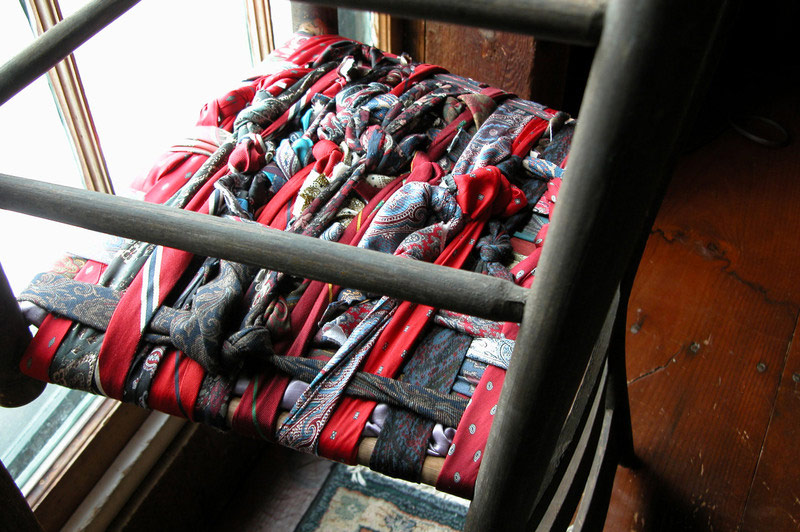
3. Knot the ends of each tie together using a reef (square) knot, which is executed by following these steps: Hold one end of the tie in each hand, then cross the ends left over right, and under – pull tight – then right over left, and under, and pull tight again. You can also use a trucker’s hitch, which is performed by making a loop in one end of the tie, then pulling the other end of the tie through the loop and really cinching it down tight before tying it off.
4. TIP: As you tighten the ties, they shrink somewhat in width, so you may find you need to add a few more to prevent empty spaces around the edges.
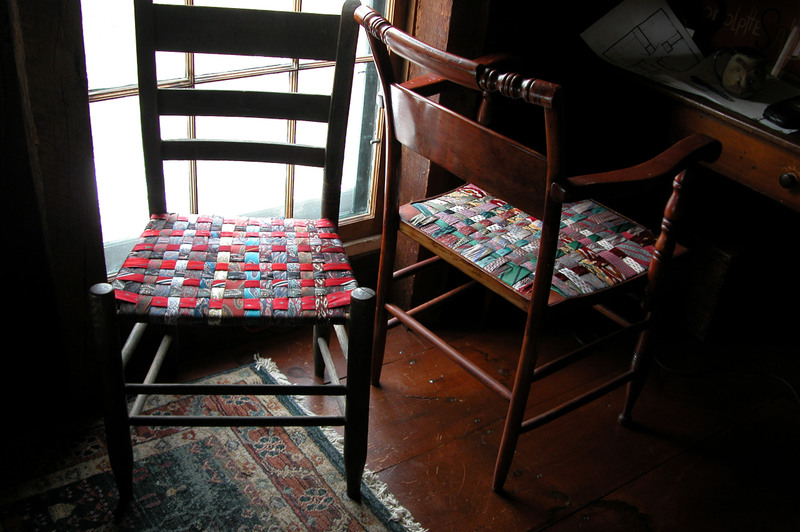
If you love your chair so much that you find yourself carrying it back and forth to work so that you have fashionable seating on the bus, then consider other recycled tie designs. For example, last night my sister had a cocktail party, and one of her guests wore a dress made out of silk ties. Kate Boulter, 20, is an art student in New York, and fashioned her very fetching frock by sewing 42 neckties together. I didn’t ask if she’d found her ties on dormitory door handles, but if she did, there were 42 surprised couples whose romantic record is subtly enshrined in her fabulous dress. And that’s one great step toward putting the neck back into neckties.
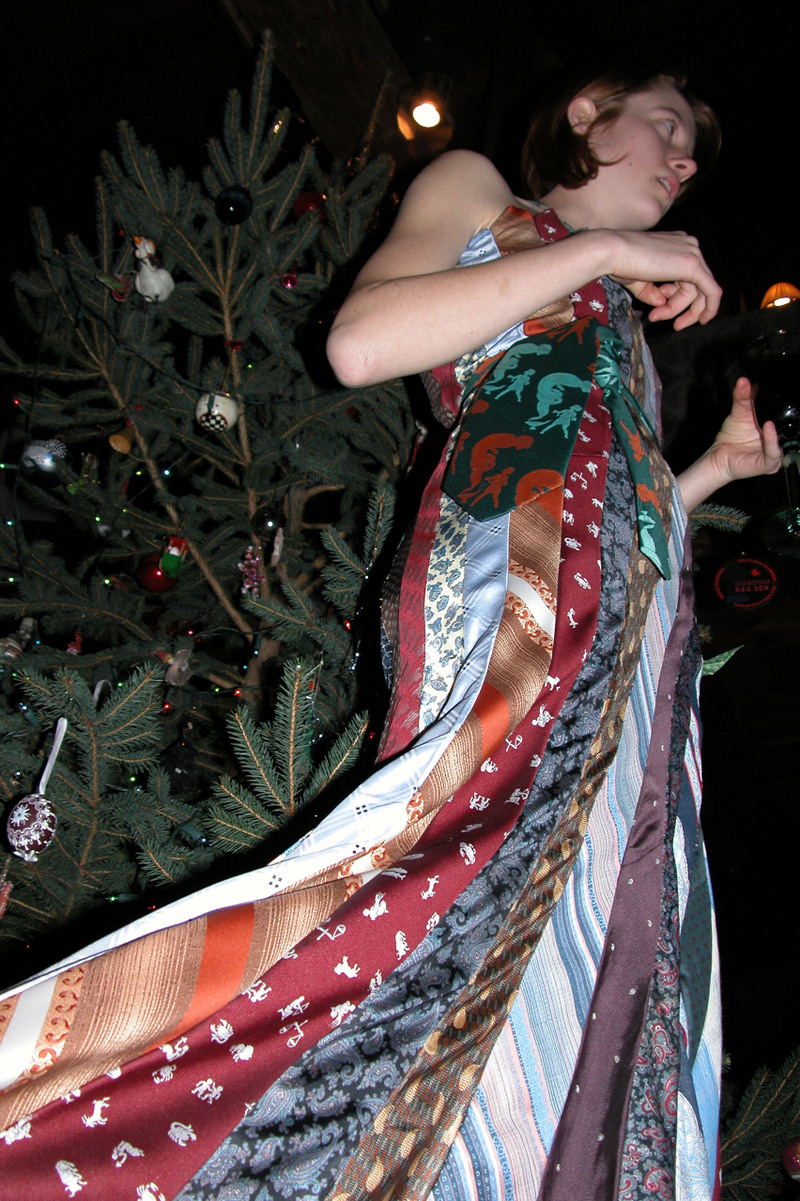
Toolgirl Mag Ruffman, Canada

PROFILE
ToolGirl – putting the ‘Ow!’ in How-To
Mag Ruffman is a television producer, writer and actress. She spent seven years in a corset as “Olivia Dale” on Disney/CBC’s beloved Road to Avonlea, and five seasons as host, creator and producer of the fix-it classic A Repair to Remember (78 episodes) and the Gemini-nominated workshop series Anything I Can Do (52 episodes) which now airs worldwide.
Mag has written a syndicated weekly home projects column, Toolgirl, for the past 5 years. She is also the author of How Hard Can It Be?, a collection of projects and repairs for beginners (Canada – McClelland and Stewart, 2003 and USA – Beyond Words, 2005).
Mag also works as a celebrity spokesperson with Habitat for Humanity Canada. In her spare time, Mag tortures her ego by playing golf.
Main Research Source
- How to make chair seats from old neck ties(25/03/2008)
